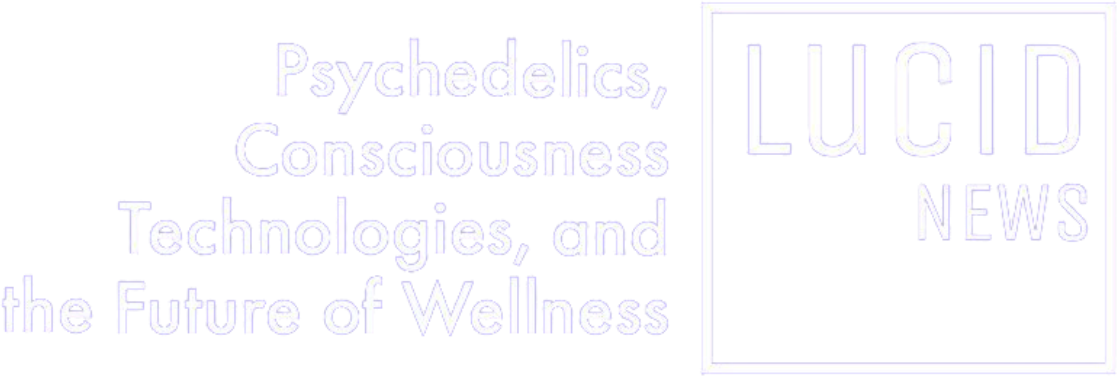I Arrived for My Ibogaine Journey Ready to Die; Now My Inner Child Is Free

Three months ago, I arrived at Beond, an ibogaine clinic in Mexico, ready to die. I mean that in the most literal sense. Ibogaine is a powerful psychedelic dwelling in the root of a Central African shrub that is gaining notoriety in the West as a treatment for Opioid Use Disorder and other indications. Ibogaine prolongs the space between heart beats. Though the risk is low, it can and does kill people and we don’t fully understand the reasons why particular individuals may be at risk.
I no longer had to speculate what I’d do if I believed I may have a week left to live. I had done it. I had put my affairs in order and gone on long walks. I had journaled. I had told my chosen family I loved them, and asked them to light a candle for me during my journey.
I also took stock of the life I’d lived for the last 46 years. I felt good about it. But I also felt imprisoned by deeply unhealthy patterns that, for decades, had caused me and some of those around me so much pain. I felt confident that those patterns had originated in my childhood, but despite many years of therapy, their origin felt out of reach, obscured by a fog of dissociation and inflamed memories. Deep down, I knew that to liberate myself from these patterns, I had to die. And I was ready.
I love astronomy, and I often think about the Big Bang, that singular cosmological event that set in motion the laws of physics in such a way as to bring our world into existence. What was my Big Bang? I often wondered. What event or set of circumstances had set in motion the seemingly immutable emotional laws that controlled my life and brought my world into being from the shadows of my subconscious?
My Ibogaine Journey
Two days after arriving at Beond, I lay back in bed, ready for my journey. By all appearances, I was in a hospital room, though something about this one was different. It was the energy. Doctors and nurses tended to me, but their movements, their expressions, their words, they all radiated compassion. This had been true from the moment I arrived at the retreat center. The air felt infused with kindness. How was this even possible in a medical setting, I wondered? How did the nurse to whom I handed my urine sample seem to shine with the light of the Buddha?
As my anxiety mounted for my impending voyage, one nurse, Karla, gently slid a tube into the IV that had already been inserted into my vein, starting a drip of electrolyte fluid directly into my bloodstream. When she finished, she gave my arm the subtlest, most tender pat, as though I’d been kissed by a feather, then continued with her other preparations.
EKG sensors formed a constellation across my chest, and the wires from each of them snaked across my body into a computer, which beeped intermittently. A blood pressure monitor squeezed my left bicep, automatically inflating every few minutes.
This is by far the weirdest setting to do any psychedelic, I thought, let alone the one sometimes described as the most powerful of them all.
The moment finally came, and I was handed a plastic cup full of capsules. Holy shit, I said to myself as I swallowed, there are a lot of them.
As psychonauts will tell you, the time between taking a psychedelic and feeling it kick in is like nothing else. It’s a liminal space. One foot remains in this world. The other dangles over the edge into something far vaster. Like a star collapsing into a black hole, time contorts and crumbles. I heard the strange, beautiful Bwiti tribal music in my ears. The feeling was of a sandaled foot pounding a dirt floor, banging on the door to my subconscious. Within my inner world, dust flew into the air. I knew what it was. It was every bit of pain I had never released. Every trauma I had buried.
Ibogaine had arrived. I felt my cells ignite, starting with my feet and continuing up to my neck. I recalled that ibogaine works on 17 different neurological systems. I could feel the molecule penetrating deep into my brain. My ego defenses mobilized, and I could feel tendrils of panic slithering up my body.
But then, the most magical thing happened.
I could feel all the machines, all the wires, all the tubes. I could sense Karla’s presence nearby.
And they all felt like pure love.
This is what it feels like to be cared for, I thought. Truly, deeply cared for. With that awareness, I was able to let go more fully than I ever have, into ibogaine’s loving arms. As I reflect on my journey, I have no doubt that the depth of my healing is a function of the completeness of my surrender.
In the book, Complex PTSD: From Surviving to Thriving, the psychologist Pete Walker writes:
“I tell my inner child that, if time travel is ever possible, I will travel back into the past and put a stop to my parents’ abusiveness. In the course of this I say things like: ‘I’ll call 911. I’ll call CPS on them. I will grab their arms and pin them behind their backs the second they try to strike you. I will muffle them with a gag so they can’t scream at you or even mumble their criticisms. I’ll put bags over their heads so they can’t frown or glare at you. I’ll send them to bed without dessert. I’ll do anything you want me to do to protect you.’”
As it turns out, time-machine rescue is possible. And the time-travel vehicle is called ibogaine.
And so, in that infinite psychedelic storm, I saw him. I saw my inner child, crying out in agony and drowning in an ocean of pain. Here it was: all of the pain I had experienced as a child and had never grieved or released. Somehow, I recalled the advice of one of Beond’s coaches, and I dove into that angry red sea and rescued him. I merged him with my soul, where he remains to this day. From that moment, laying in my hospital bed, I felt—literally felt—an infant lying on my chest, resting. At last, at last, at last, resting.
The Ibogaine Booster Dose
Two days later, during a booster dose, I started to worry. How will I take care of this beautiful child who sleeps on my chest? What do I know about how to love and protect him? And then, the answer came, with that diamond clarity that illuminates ibogaine missives: I’ll care for my inner child just like Karla, my sweet nurse, cared for me.
That was three months ago. Since then, during that sacred period in the aftermath of an ibogaine experience, where our brains can form new neural pathways and lovingly let go of maladaptive ones, where we can hold open that cellar door into the basement of our subconscious and let sunshine stream in, I’ve done my best to model what Karla showed me and honor the great unfolding that ibogaine has precipitated.
I’ve created space for me in my life. I’ve put myself first. After four years of launching and running my non-profit, Fireside Project, with hardly a moment off, I’ve rested. I’ve played. I’ve sung. I’ve taken the time to start to build a secure, good-enough, and loving connection with my inner child. I’ve breathed deeply and experienced the miracle of living fully from my parasympathetic nervous system for the first time. I’ve marveled at just how beautiful it feels to move through the world as a whole, integrated person.
I’ve come to see my old patterns as friends, emissaries sent by a terrified inner child to pull my attention away from the present moment and back to him. My friend, the psychologist Dr. Jacob Ham, is right: trauma really is the opposite of presence. Now that my inner child is with me, those friends can rest. They succeeded! Rather than feeling frustrated with them as I so often did before my ibogaine experience, I can now embrace them, my heart overflowing with gratitude. Thanks to them, my inner child is free.
As it turns out, there is life beond my Big Bang.
Afterward. Some final thoughts.
I recently heard a neuroscientist say that he believes that ibogaine holds more potential for humanity than AI. I tend to agree. From what I know already, shelves of psychology textbooks will need to be substantially revised to reflect ibogaine’s radical healing potential.
But as worldwide interest in ibogaine surges, one of the plants containing ibogaine, the shrub Tabernanthe iboga, has become a cash crop and it is endangered. The iboga shrub should be left for the Bwiti tribe of Gabon. For them, iboga is a foundation of their heritage and losing it would be a blow to their cultural identity.
Fortunately, there is a sustainable and renewable alternative, the Voacanga africana plant, which is cultivated on plantations in Gabon and elsewhere in Africa specifically for commercial use. This reduces wild harvesting and gray market sales of Tabernanthe iboga. A substance called Voacangine is extracted from the Voacanga, and used to produce a semi-synthetic and high purity ibogaine hydrochloride. This was the source of the ibogaine used during my time at Beond.
Beyond sustainable sourcing, further action is needed to ensure that the benefits of ibogaine are shared with the Bwiti and that their sacred traditions and lands are honored and preserved. Also, as this medicine moves towards market, we should work to help ensure that cost will not be a barrier to access. Here are three specific recommendations:
- Everyone who benefits from ibogaine, including ibogaine retreats and participants, should donate to nonprofits like Blessings of the Forest, which support Gabonese environmental and cultural institutions, Indigenous communities, and administrative authorities committed to the preservation and sustainable development of Gabon’s natural and cultural heritage.
- Support efforts like the one underway in the State of Ohio to use public funding to bring ibogaine to market. One way to do this is by donating to the non-profits like the REID Foundation that are seeking to secure public funding from Ohio’s opioid settlement to begin ibogaine clinical trials for Opioid Use Disorder.
- When the time comes, demand that federal and state governments, via Medicare, Medicaid, or other programs, cover the full cost of ibogaine treatment.
Editor’s note: The author discussed the possibility of writing about his experience with Beond, but paid for the cost of his treatment and did not share this account with them prior to publication.
Featured image of Voacanga africana by Hiobson – Own work, CC BY-SA 4.0, https://commons.wikimedia.org/w/index.php?curid=64895112








